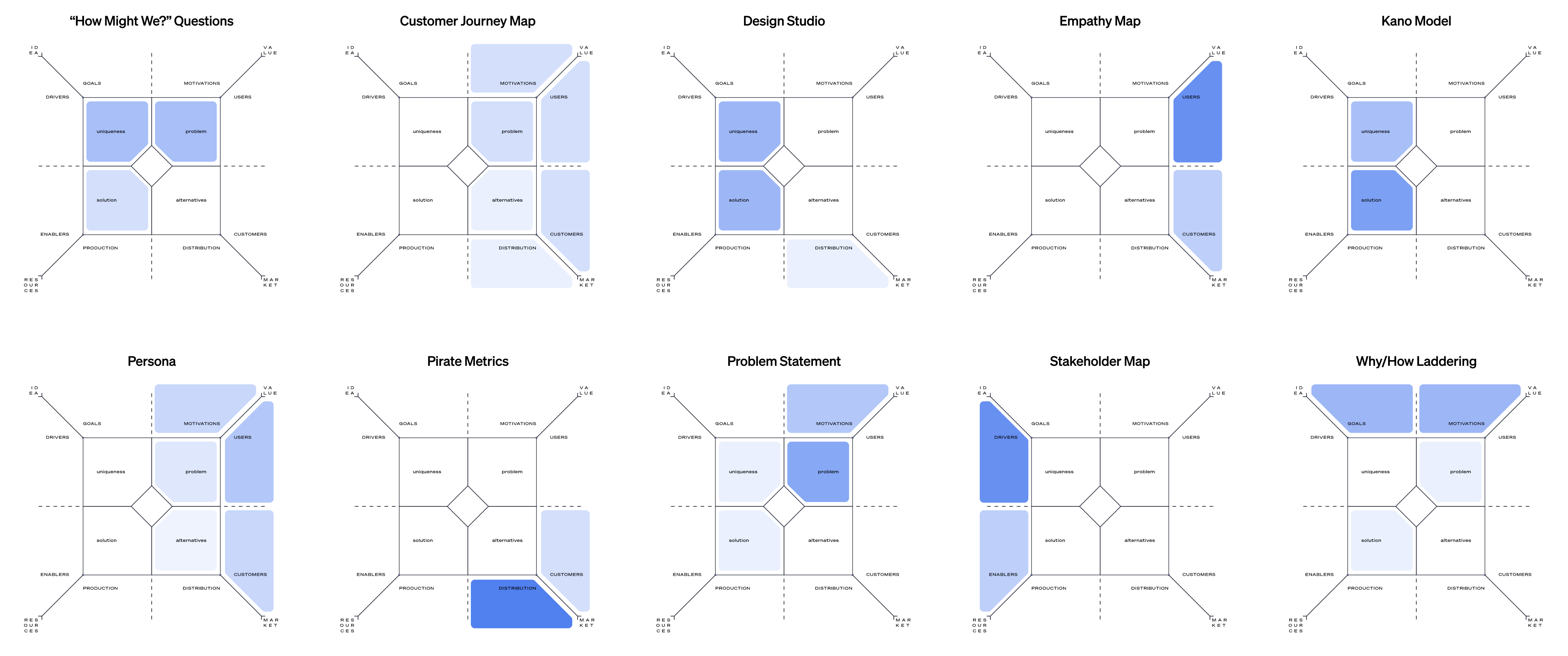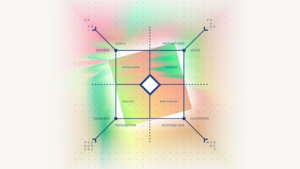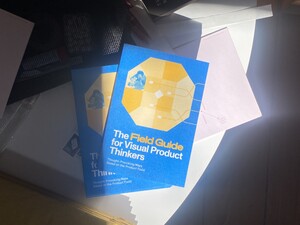Understanding & Using Innovation Methods

According to Wikipedia, Method literally means “a pursuit of knowledge, investigation, mode of prosecuting such inquiry, or system.” Indeed, this is exactly how we understand and use methods — as tools to help us gain information and make sense of it, to become more confident when we make product decisions.
I still remember very clearly the first time I was introduced to a method to better understand a product challenge I was facing. It was back in 1998, I was a verdant project manager working on a concept for a world-changing internet platform. Well, back then everyone was.
I had it all figured out in my mind. In fact, it was genius (*ahem*). But when I talked about it in front of engineers and designers, I just received blank stares and lots of questions that I thought were already answered. Super frustrating. Until one of the experienced engineers kneeled down and started to make sketches on some sheets of paper that were quickly covering the floor.
That’s when I learned about Wireframing. And about two hours later, we all had a pretty good understanding of both the basic concept and the underlying complexity that made it so difficult for me to sell the idea in the first place.
It really opened my eyes, and I got pretty excited.
Not only because it helped me in that situation, but because I figured there may be many more useful methods to deal with these kinds of challenges I didn't know yet. Seems a little strange today, but in those days, digital product management as we know it today didn’t exist, let alone a catalog of innovation methods to browse through.
What Do We Need Methods For?
So, what are “these kinds of challenges” we address with innovation methods?
One way or another, they all are about dealing with the inherent complexity of innovation, or as John Cutler likes to call it, “the beautiful mess of product development”.
Innovation methods help us understand our context by viewing it from different perspectives (diagnosis), find focus and set basic direction (guiding policy), facilitate ideation and coordinate execution (coherent action) — which happens to be the very kernel of strategy, according to Richard Rumelt.
The question remains, though, how do we know when to apply which method? I mean, even after having used countless innovation methods myself over the years, I can’t say that I always know which one to pick.
Why?
For one, there are so many and I tend to forget about them after a while. For another, situations are always very different: the maturity level of an idea, concept, or product, the flight level, culture, environment, team size, skills — never the same setting.
Advice Needs To Be Contextual
What would really help, then, is a map that puts established innovation methods into context, depending on your situation.
Those of you who are familiar with the Product Field might already have an idea how that method map would look like, and how it would work. After all, the Product Field was designed to find weak spots in the strategic context of a product innovation.
In fact, these weak spots have geometric positions on the Product Field. So why not use the very same geometry to provide contextual method advice?

For example:
If the Product Field sense-making process results in confusion about the social dynamics and power relations between the product manager, decision makers, and influencers — it’s time to pull out the Stakeholder Map method. It helps product managers clarify the relationships of internal and external stakeholders to product development, assess their influence, and choose an adequate strategy for managing them.
Or if the product team is unsure if a (planned) feature is just an expected part of the solution or if it creates the very uniqueness to generate user excitement — the Product Field calls the Kano Model into play. It helps product teams classify product features according to their perceived value.
Or if they find it hard to agree on the strategic goal to focus on — the Product Field introduces the Why/How Laddering method. It helps product teams complement a stated goal statement with more abstract and more concrete statements so they develop a shared understanding of the goal hierarchy to better assess which goal statement is the most inspiring.
Field Makes It Happen
At Field, we are currently working on such a feature. Just like an experienced product coach, it provides contextual method advice based on the results of a facilitated sense-making process. And it will be featured with actionable descriptions so even inexperienced product managers can make use of them effectively.
To give you an idea of the hands-on nature of such method advice, we decided to publish the descriptions for the above-mentioned methods (Stakeholder Map, Why/How Laddering, Kano Model) as separate blog posts.
Needless to say, I wish I had had such a resource back in the 90s. Well, at least I can say that it exists now. And I’m rather confident that the Field Method Advice will lead to more coherent strategies, and better products.

Starte deine zielgerichtete Field Testphase mit einem unserer Product Coaches. Oder buche eine persönliche Demo Session.




